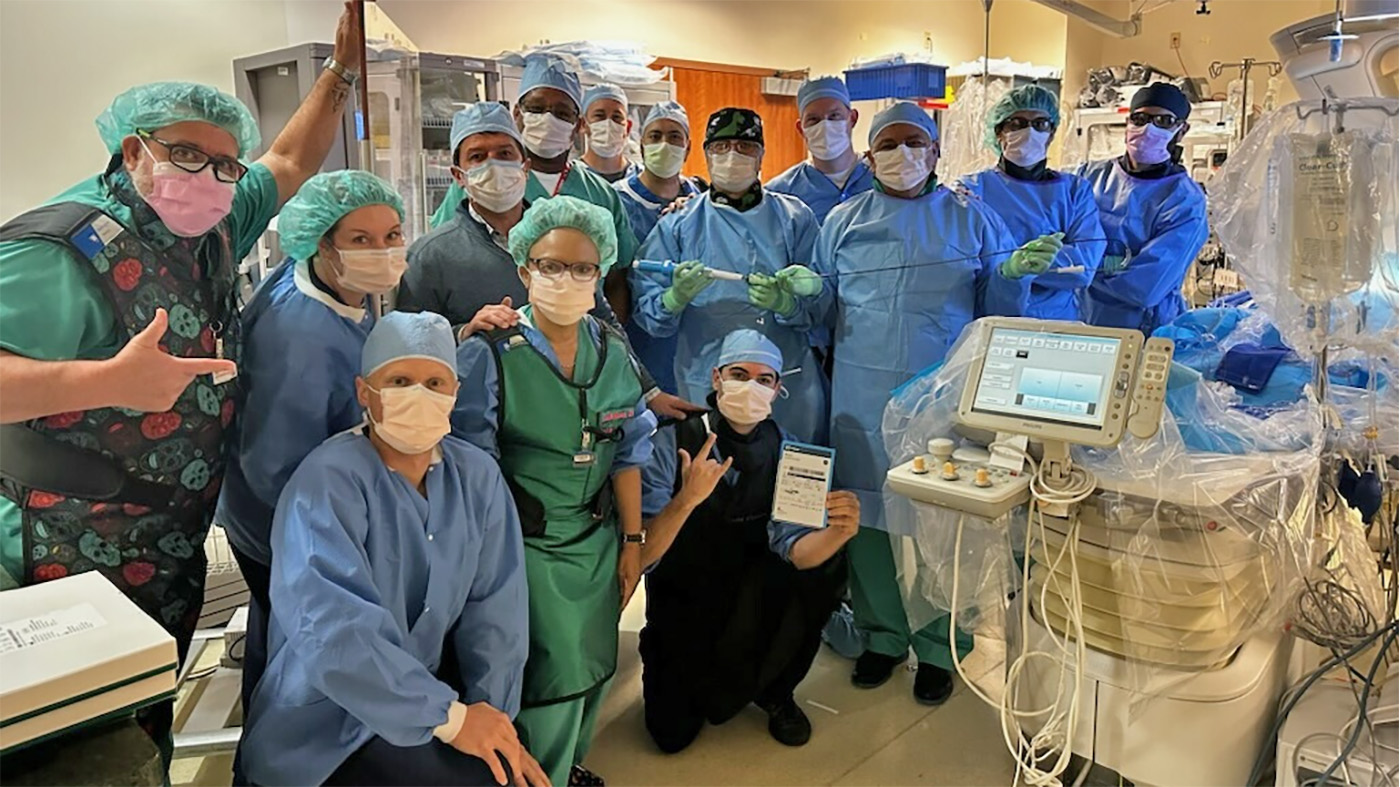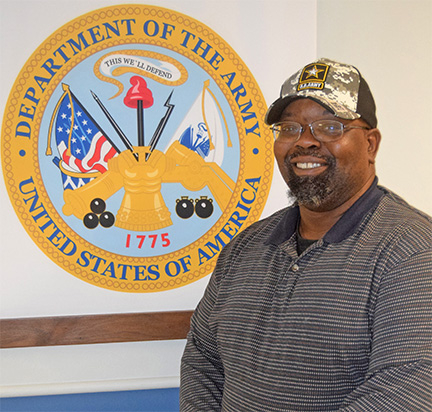A Texas Veteran is now breathing easier thanks to a groundbreaking procedure he recently received at Michael E. DeBakey VA in Houston. In November, Eric Johnson received the second of two, tiny, leadless pacemakers implanted in his heart through a first-of-its kind technology approved by the FDA in June.
Houston VA offers Veterans with abnormally slow heart rates the new Avier DR Leadless Pacemaker technology. The leadless system consists of two tiny pacemakers—each smaller than a AAA battery—that are inserted via a catheter in a large vein in the thigh. Without any incisions, two devices are secured within the upper and lower chambers of the heart. The dual pacemakers work together to normalize the heart’s rhythm.
Johnson, who served in the Army in the 90s, was one of two Veterans to undergo the procedure at Houston VA a few weeks ago, and said he is already thrilled with the results.
“Now I’m picking up speed.”
“I just got the second pacemaker a week ago and already I am feeling like a million bucks,” he said. “I was struggling with shortness of breath, and I kept going between slow heart beats and racing heart beats. It was so hard to get around, but now I’m picking up speed and feeling back to my old self.”
According to Dr. Hamid Afshar, electrophysiologist at Houston VA, abnormal slowing of the pulse often occurs in older Veterans and can cause them to experience fatigue, dizziness, passing out and diminished quality of life. In the past, conventional pacemakers—which are usually inserted under the chest—would noticeably bulge out and require the placement of leads or wires on the heart muscle. The leadless technology can reduce inflammation, scars and issues like wire insulation breaks and device infection.
“The leadless dual-chamber pacemaker is an excellent option to treat abnormally slow heart rates,” Afshar said. “There are no wires implanted in veins, no metal device under the skin and no surgical incision. This means the potential for less risk, greater comfort and fewer post-procedure restrictions for our Veterans.”
The two pacemaker devices communicate through electrical pulses to make sure every heartbeat stays in sync. The devices last 10 to 15 years. After that, doctors can simply insert another set.
“Two pacemakers are both a gamechanger and a life changer.”
“We are thrilled to be able to offer Veterans this cutting-edge technology,” said Dr. Irakli Giorgberidze, director of Houston VA’s Electrophysiology Lab. “Our goal is to improve our Veterans’ quality of life, and leadless pacemakers in both chambers of the heart without leads is both a gamechanger and a life changer for our Veterans.”
After his procedure, Johnson, who works at the Houston VA as a nutrition and food service worker, said he is looking forward to the future. “I am proud to be a Veteran serving other Veterans at VA, and getting this new pacemaker is helping me get back to work and back to being myself. I can’t wait to get moving.”
Topics in this story
Link Disclaimer
This page includes links to other websites outside our control and jurisdiction. VA is not responsible for the privacy practices or the content of non-VA Web sites. We encourage you to review the privacy policy or terms and conditions of those sites to fully understand what information is collected and how it is used.
More Stories
Study underscores important role COVID vaccination can have in protecting Veterans from infection and reducing long-term health consequences
Columbia VA’s robotic surgery teams completed their 800th robotic surgery and are on schedule to hit 1,000 by the end of the year.
In a decentralized clinical trial, Veterans can participate from their own homes or local VA instead of having to travel to a research site.









I have a pace marker in my chest. Can this be changed? I live in the east, NY and Florida. Also, where is the nearest facility I can go to?